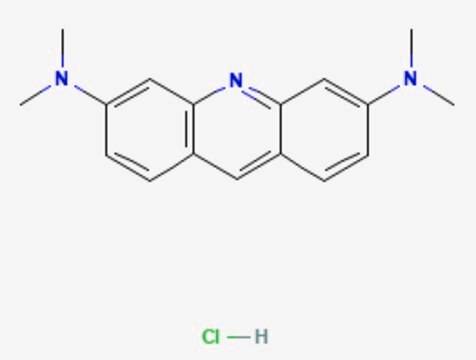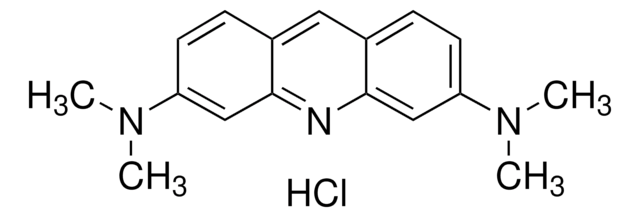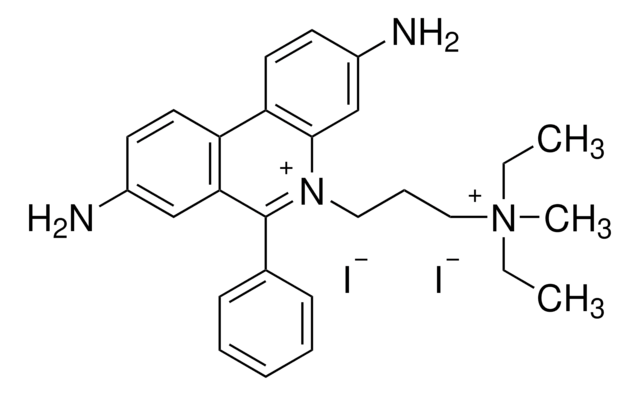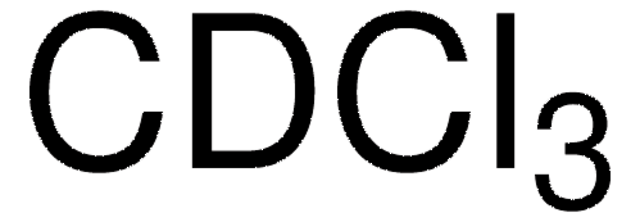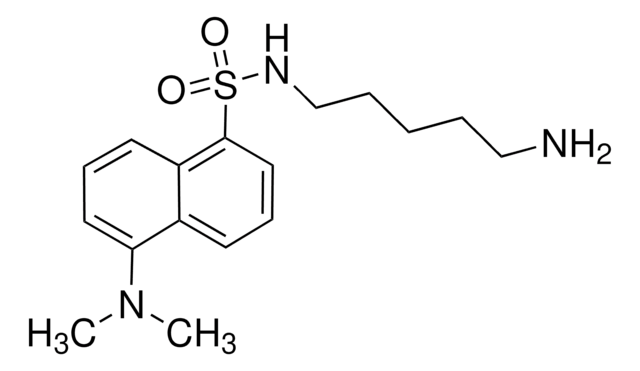318337
Acridine Orange hydrochloride hydrate
≥98% (HPLC)
Synonym(s):
3,6-Bis(dimethylamino)acridine hydrochloride
About This Item
Recommended Products
Quality Level
assay
≥98% (HPLC)
form
powder
color
orange
mp
284-287 °C (lit.)
solubility
H2O: 0.1%, clear, orange to red
λmax
492 nm
ε (extinction coefficient)
≥14,000 at 227-233 nm in water at 0.005 g/L
≥35000 at 265-271 nm in water at 0.005 g/L
application(s)
diagnostic assay manufacturing
hematology
histology
storage temp.
room temp
SMILES string
Cl[H].[H]O[H].CN(C)c1ccc2cc3ccc(cc3nc2c1)N(C)C
InChI
1S/C17H19N3.ClH.H2O/c1-19(2)14-7-5-12-9-13-6-8-15(20(3)4)11-17(13)18-16(12)10-14;;/h5-11H,1-4H3;1H;1H2
InChI key
JUAAUEXLEKAEQC-UHFFFAOYSA-N
Looking for similar products? Visit Product Comparison Guide
Related Categories
Application
- to stain intracellular acidic vesicles.
- to measure lysosomal membrane permeability (LMP).
- or autophagy detection.
Biochem/physiol Actions
signalword
Warning
hcodes
Hazard Classifications
Muta. 2
Storage Class
11 - Combustible Solids
wgk_germany
WGK 3
flash_point_f
Not applicable
flash_point_c
Not applicable
ppe
Eyeshields, Gloves, type N95 (US)
Choose from one of the most recent versions:
Certificates of Analysis (COA)
Sorry, we don't have COAs for this product available online at this time.
If you need assistance, please contact Customer Support.
Already Own This Product?
Find documentation for the products that you have recently purchased in the Document Library.
Customers Also Viewed
Our team of scientists has experience in all areas of research including Life Science, Material Science, Chemical Synthesis, Chromatography, Analytical and many others.
Contact Technical Service